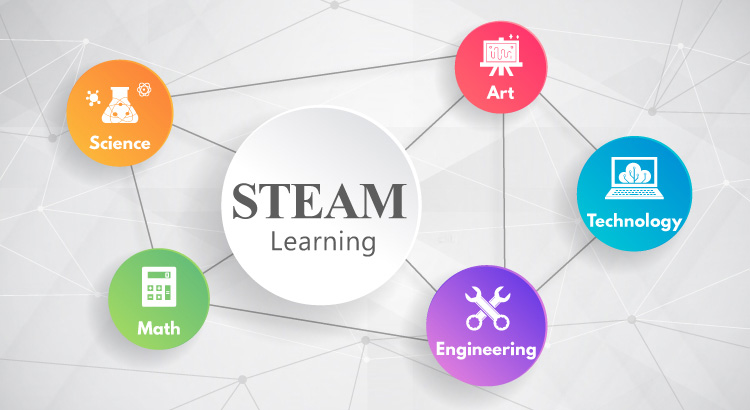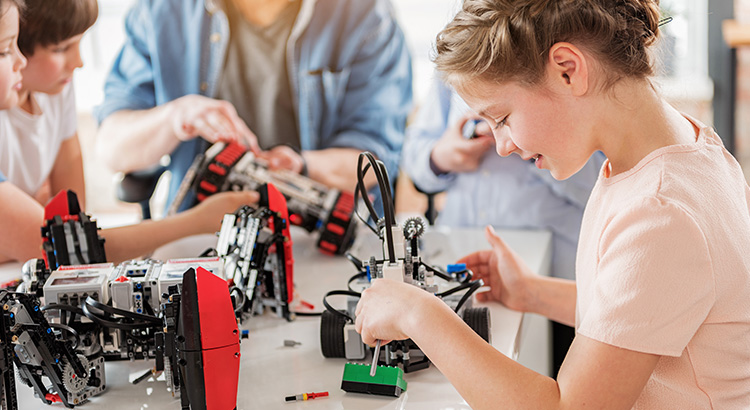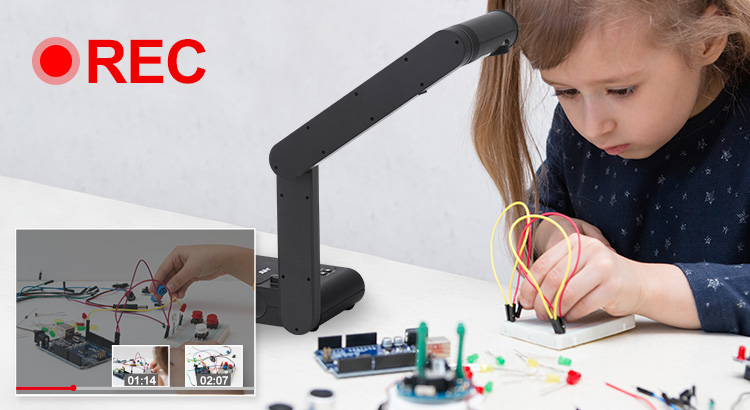The way we work, learn, and play are all drafting behind technology as it races along the autobahn of progress at breakneck speed. Education is especially affected by such advancement, as teachers are tasked with preparing students for a world that will soon run on AI algorithms.
The answer, according to many modern educators, is STEAM learning. These programs are quickly changing the way children are taught and creating demand for more and more technology in the classroom. Fortunately, companies like AVer are stepping up to provide an ever expanding array of STEAM resources.
STEAM Learning Defined

If you’re new to the world of education, here’s a mini history lesson. First there was STEM learning, which included science, technology, engineering, and math. Then STEM added art to its curriculum and really picked up STEAM!
The basic goal of STEAM is to integrate the subjects represented in the acronym into as many lessons as possible, effectively de-compartmentalizing traditional education in favor of a holistic, synchronized approach. An example of STEAM in the classroom could be students presenting science projects via artistic videos or creating a stop-motion animation like this Tinker Lab idea pointed out by Project Pals founder Miriam Bogler.
Virtually any combination of science, technology, engineering, art, and math will do. And while all these areas of study dovetail together nicely, the use of technology makes blending subjects especially intuitive.
STEAM and Technology

Rather than merely reading about technology in a textbook, students in STEAM programs receive invaluable hands-on experience with devices and software such as robots, 3D printers, audiovisual equipment, and production programs. Therefore, the market is filled with education solutions aimed directly at STEAM learning organizations.
One example is Asus’s Zenbo Junior, which we covered in a recent post. This adorable little robot is made for teaching students of all levels how to code. AVer’s education technology offerings also align perfectly with STEAM methods.
For instance, our visualizers and professional PTZ cameras are designed to enable the interactive connectivity that is essential in a STEAM environment. Here are a few ways teachers can use these products for STEAM learning:

- AVer visualizers feature image- and video-capturing functionality. Students can use them to give presentations to the class or even turn their science projects into step-by-step picture or video instructions.
- For older students, AVer professional PTZ cameras—like the PTC500S and PTZ330—present opportunities to learn video production. Students can capture every step of the way as they engineer and build a robot, and then take that content and learn video editing.
- Another STEAM-related application of AVer camera technology is content sharing. Students can use AVer visualizers or presentation cameras to livestream or upload their captured content, learning to interact with the world via technology.
Technology is an integral aspect of STEAM learning, and watching the resulting innovations pile up is beyond exciting. AVer is always working on new learning solutions, so check back with us often to keep up with what’s next in EduTech.